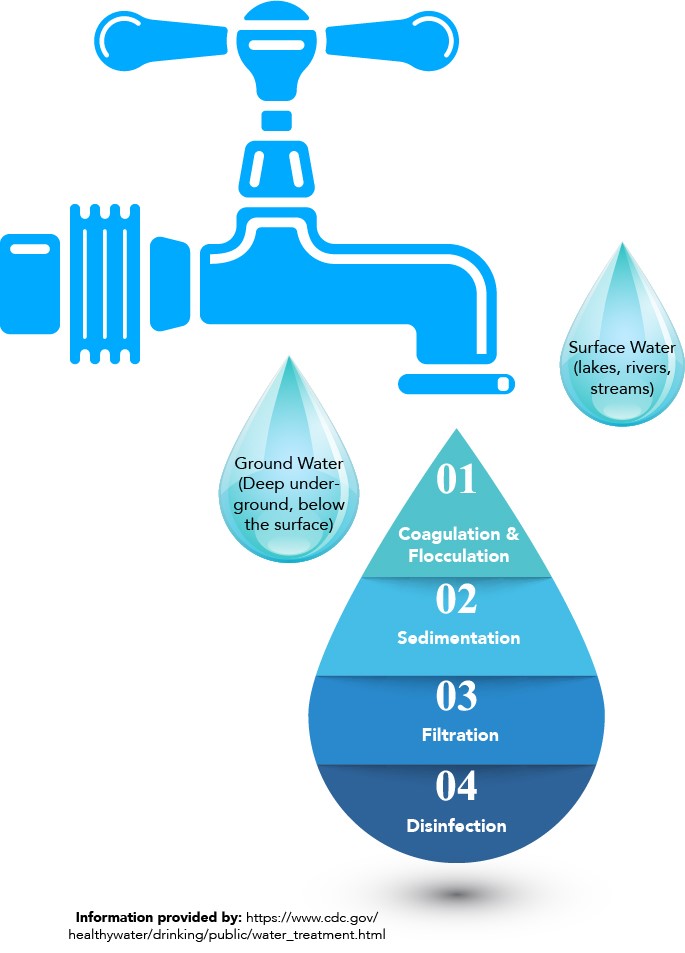Have you ever wondered how the water you drink, cook with, and bathe in actually gets to you house? It is a fascinating process that starts with, of course, WATER!
Many people take water for granted and don’t think about the complex process that takes place before it gets to their home. There are two ways your home can get water – a well, typically found in homes located in rural areas, or public water supply.
Public water systems acquire the water they distribute to customers from two sources: surface water and ground water. Surface water is, just as it sounds, water that is on the surface such as reservoirs, rivers, lakes, and streams. Ground water is found deep underground and is accessed by drilling and pumping it to the surface. Western Virginia Water Authority (opens new window) uses both of these methods to provide drinking water to the region around our Roanoke, Virginia office, but there are hundreds of similar public water authorities across the nation.
Once the water is retrieved, it must go through a water treatment process in order to be safe to drink and use, in general here are the steps it takes to make it to your faucet (opens new window)!
- Coagulation & Flocculation: These are the first two steps in the water treatment process. Chemicals are added in order to make dirt, and other dissolved particles, bind together to form larger particles that are easier to filter out later in the process. These larger particles are called floc (flocculation is the process of making these larger particles).
- Sedimentation: The larger floc particles settle to the bottom of the water supply. The process of the particles settling is sedimentation.
- Filtration: Once the particles have settled, the water above passes through numerous filters of varying sizes to remove dissolved particles such as bacteria, dust, parasites and more.
- Disinfection: Now that filtration is complete, chemicals (such as chlorine or chloramine) are added to kill any parasites, impurities, bacteria, or viruses that made it through the filtration process. This also protects the water from germs as it travels through pipes to your house.
Water pipes that distribute the water run from the water treatment plants, underneath roads, sidewalks, and yards to each home – these are called water mains. Some of the water that is treated is stored in large tanks or water towers - you know, the ones you see riding down the highway with the name of the county or city on them. These provide reserve capacity emergency water supply in case of a water main leak, fire catastrophe, or other event.
Once all of those steps are complete and the water has made its way through the water mains, into your pipes, and to your faucet, you are able to enjoy some refreshing H2O. Isn’t it amazing how many steps go into providing something we think to be so simple as water from the faucet?
While many people can access water from their faucet, the reality is that there are some who do not have access to safe drinking water. At SERCAP, we are dedicated to providing solutions to water and wastewater problems.

